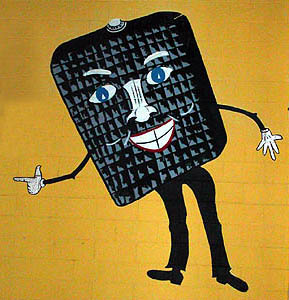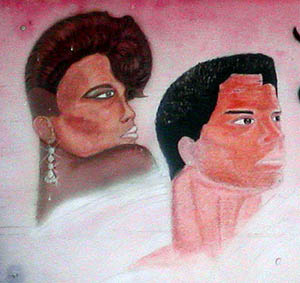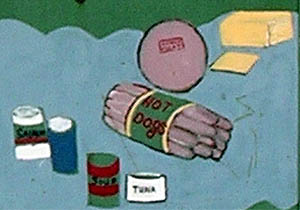|

Windows to the
vernacular
Hand-painted shop signs are among the truest forms of vernacular art.
Speaking an idiomatic language widely understood in their intended community, they are vernacular in the strict sense of the term. Just as pertinent, they communicate in near total independence from fine art society, rarely reflecting its cultural aspirations and pretensions. Yet they can embody the creative qualities fundamental to art -- visual expressiveness, aesthetic dimension and craftsmanship. And they are typically made by artists who are self-taught or, if trained, working within a kind of folk tradition.
However artful a sign might be, though, its aesthetic qualities almost always come second to its inherent function. This incidental quality to any artistic intention actually opens up opportunities for individual expression, since the commissioner of the sign is likely to be more concerned with the fist-order communication of the commercial message than the details of artistic execution. The artist may put his or her heart and soul into the lettering of the details of the image, but the shop owner's first priority will be what the sign says.
 That's also true of the viewer. Interaction with a sign is, in the first instance, on the sign's own terms. The imagery may be exotic or obscure, but you will still routinely seek out the commercial message the sign conveys even if you have no plausible interest in the business advertised. That irresistible response actually supplies a comforting accessibility along with functional authenticity. Whatever other
qualities these signs possess, their core goal is straightforward and apparent.
That's also true of the viewer. Interaction with a sign is, in the first instance, on the sign's own terms. The imagery may be exotic or obscure, but you will still routinely seek out the commercial message the sign conveys even if you have no plausible interest in the business advertised. That irresistible response actually supplies a comforting accessibility along with functional authenticity. Whatever other
qualities these signs possess, their core goal is straightforward and apparent.
The signs also are windows into a vernacular culture. The pitch that the names and messages make, the style and imagery of the art, all say something of interest about their (literal) time in the sun.
This ultimate form of non-collectible folk art is free for the finding, though like most hand-made artifacts relatively rare. Still, these signs put art all over the landscape, which is something to be treasured if you know to look for it. The most fruitful locations for finding this work include rundown commercial strips and inner cities. The less money that businesses have to invest in their signs, the more likely they are to go do it yourself. The less they have invested in modernization, the fewer cases of prefab plastic replacing hand-made. Inner cities have the additional advantage of lively ethnic communities that bring their own vernacular commercial traditions to bear on signage.

Wherever one finds these signs, their lifespans are sure to be short. If they are not obliterated because of a change in tenant, preparation of a building for sale or adjustments in the owners taste or resources, they will wear out from exposure to the elements. Thus the work is certain to disappear long before its equally certain elevation to the status of lost cultural treasure.
It's not just age that gives 18th and 19th Century trade signs their appeal, but the qualities of vernacular expression they share with this kind of contemporary material, which is why the newer stuff will someday become classic as well.
|